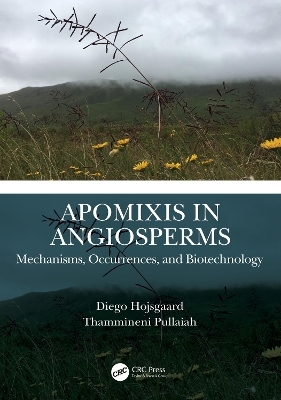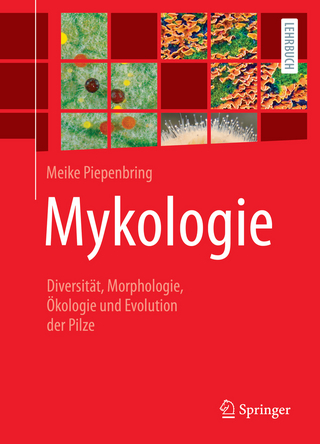
Apomixis in Angiosperms
CRC Press (Verlag)
978-0-367-54295-5 (ISBN)
Apomixis in Angiosperms: Mechanisms, Occurrences, and Biotechnology provides a systematic introduction to the mechanisms and developmental types of apomixis along with an overview of alternative methodologies for identifying apomixis and a detailed reassessment of the occurrences of apomictic species among angiosperm families. Optional methods are illustrated with examples of all types of apomixis and biological levels of analysis, i.e. cells, ovules, seeds and offspring. Data on apomictic species are collected in tables along with information on ploidy, type of apomixis and references. Occurrences of apomixis are briefly discussed in phylogenetic and evolutionary contexts. An outline of the molecular basis of apomixis in plants is presented, together with prospects and challenges that remain for its biotechnological exploitation.
This book:
Provides a systematic overview of the mechanisms of apomixis, developmental types and methodology for apomixis research.
Reassesses apomixis at the species level in angiosperm families.
Contains tables summarizing relevant information on apomixis.
Analyses occurrences of apomixis in phylogenetic and evolutionary contexts.
Outlines the molecular basis and biotechnological perspective of apomixis breeding.
This book presents an accessible overview of apomixis research and a curated dataset of apomictic species. It serves as a reference book for students, researchers and citizen scientists interested in apomixis, as well as researchers, business innovators and entrepreneurs pursuing apomixis breeding. It can also be used as a textbook in graduate courses on plant reproduction.
Diego Hojsgaard obtained his Ph.D. (2010) in Natural Resources (Botany) from the National University of the Northeast, Argentina. He was a Post-doctoral Fellow at Vienna University, Austria, during 2010-2011, before joining The University of Göttingen as a non-tenured Assistant Professor in 2012. Since 2016 he has acted as Visiting Professor at the National University of Misiones in Argentina. He travelled extensively in Europe and South America, the United States, England and China and visited Universities and Botanic Gardens in about 16 countries. He is currently a Guest Scientist in the Taxonomy and Evolutionary Biology group at the Leibniz Institute of Plant Genetics and Crop Plant Research in Germany. Diego does research in Plant Evolutionary Biology and Genetics, focusing on understanding how species use different mechanisms to maximize the exploitation of genetic variability during adaptation and speciation. His projects address topics in plant reproductive biology with an emphasis on apomixis, including ovule ontogeny and the origin of different types of female gametophytes, plant cytotype interactions (population dynamics) and natural distributions, extant genetic variability and the ecology of adaptation. He has published 40 research articles, 3 book chapters and edited one book. Dr. T. Pullaiah is a former Professor at the Department of Botany at Sri Krishnadevaraya University in Andhra Pradesh, India, where he has taught for more than 35 years. He has held several positions at the university, including Dean, Faculty of Biosciences, Head of the Department of Botany, Head of the Department of Biotechnology, and Member of Academic Senate. He was President of Indian Botanical Society (2014), President of the Indian Association for Angiosperm Taxonomy (2013) and Fellow of Andhra Pradesh Akademi of Sciences. He was awarded the Panchanan Maheshwari Gold Medal, the Prof. P.C.Trivedi Medal, the Dr. G. Panigrahi Memorial Lecture award of the Indian Botanical Society and Prof. Y.D. Tyagi Gold Medal of the Indian Association for Angiosperm Taxonomy, and a Best Teacher Award from Government of Andhra Pradesh. Under his guidance 54 students obtained their doctoral degrees. He has authored 52 books, edited 23 books, and published over 330 research papers, including reviews and book chapters. His books include Advances in Cell and Molecular Diagnostics (published by Elsevier), Camptothecin and Camptothecin producing Plants (Elsevier) Ethnobotany of India (5 volumes published by Apple Academic Press), Global Biodiversity (4 volumes, Apple Academic Press), Red Sanders: Silviculture and Conservation (Springer), Genetically Modified Crops (2 volumes, Springer), Monograph on Brachystelma and Ceropegia in India (CRC Press), etcs. He was also a member of Species Survival Commission of the International Union for Conservation of Nature (IUCN). Professor Pullaiah received his PhD from Andhra University, India, attended Moscow State University, Russia, and worked as Post-Doctoral Fellow during 1976-1978.
Chapter 1. Introduction
Chapter 2. Sexual Development and Pathways to Apomixis
Chapter 3. Identifying Apomixis in Nature
Chapter 4. Apomictic Grasses
Chapter 5. Apomictic Daisies
Chapter 6. Apomictic Roses
Chapter 7. Apomixis in Other Families of Angiosperms
Chapter 8. Apomixis in Angiosperms
Chapter 9. Molecular Basis of Apomixis and Applications
Glossary
| Erscheinungsdatum | 17.08.2022 |
|---|---|
| Zusatzinfo | 11 Tables, black and white; 8 Line drawings, color; 8 Illustrations, color |
| Verlagsort | London |
| Sprache | englisch |
| Maße | 178 x 254 mm |
| Gewicht | 453 g |
| Themenwelt | Naturwissenschaften ► Biologie ► Botanik |
| Weitere Fachgebiete ► Land- / Forstwirtschaft / Fischerei | |
| ISBN-10 | 0-367-54295-1 / 0367542951 |
| ISBN-13 | 978-0-367-54295-5 / 9780367542955 |
| Zustand | Neuware |
| Informationen gemäß Produktsicherheitsverordnung (GPSR) | |
| Haben Sie eine Frage zum Produkt? |
aus dem Bereich


